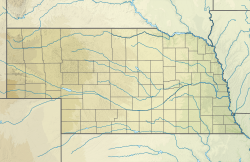2010 census
As of the census [13] of 2010, there were 351 people, 137 households, and 99 families residing in the village. The population density was 835.7 inhabitants per square mile (322.7/km2). There were 142 housing units at an average density of 338.1 per square mile (130.5/km2). The racial makeup of the village was 98.0% White, 0.3% Native American, 0.3% Asian, and 1.4% from two or more races. Hispanic or Latino of any race were 0.3% of the population.
There were 137 households, of which 31.4% had children under the age of 18 living with them, 61.3% were married couples living together, 4.4% had a female householder with no husband present, 6.6% had a male householder with no wife present, and 27.7% were non-families. 21.9% of all households were made up of individuals, and 8.8% had someone living alone who was 65 years of age or older. The average household size was 2.56 and the average family size was 2.96.
The median age in the village was 39.4 years. 24.8% of residents were under the age of 18; 8% were between the ages of 18 and 24; 22.9% were from 25 to 44; 30.4% were from 45 to 64; and 14% were 65 years of age or older. The gender makeup of the village was 54.1% male and 45.9% female.
2000 census
As of the census [3] of 2000, there were 359 people, 138 households, and 93 families residing in the village. The population density was 890.2 inhabitants per square mile (343.7/km2). There were 145 housing units at an average density of 359.6 per square mile (138.8/km2). The racial makeup of the village was 95.82% White, 0.56% Native American, 0.28% Asian, 1.67% from other races, and 1.67% from two or more races. Hispanic or Latino of any race were 2.23% of the population.
There were 138 households, out of which 32.6% had children under the age of 18 living with them, 60.1% were married couples living together, 4.3% had a female householder with no husband present, and 32.6% were non-families. 26.8% of all households were made up of individuals, and 14.5% had someone living alone who was 65 years of age or older. The average household size was 2.60 and the average family size was 3.24.
In the village, the population was spread out, with 30.9% under the age of 18, 6.4% from 18 to 24, 28.1% from 25 to 44, 23.1% from 45 to 64, and 11.4% who were 65 years of age or older. The median age was 34 years. For every 100 females, there were 127.2 males. For every 100 females age 18 and over, there were 112.0 males.
As of 2000 the median income for a household in the village was $36,932, and the median income for a family was $42,031. Males had a median income of $26,023 versus $21,023 for females. The per capita income for the village was $15,475. About 4.2% of families and 5.7% of the population were below the poverty line, including 7.5% of those under the age of eighteen and 9.5% of those 65 or over.






